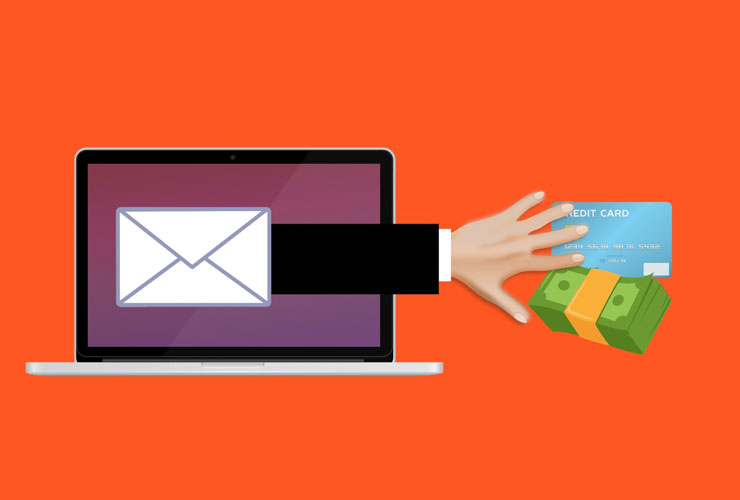So erkennen Sie eine Phishing-E-Mail: Tipps und Beispiele für Ihre Sicherheit

19. Februar 2023
Phishing-E-Mails sind eine Art von Cyberangriff, der versucht, den Empfänger dazu zu bringen, persönliche Informationen preiszugeben, wie z.B. Anmeldeinformationen oder finanzielle Details.
Diese E-Mails verwenden oft Social-Engineering-Taktiken, um ein Gefühl der Dringlichkeit oder Panik zu erzeugen, was den Empfänger dazu bringt, zu handeln, bevor er nachdenkt. In diesem Artikel werden wir genauer untersuchen, wie man Phishing-E-Mails erkennt und einige Beispiele geben, um Ihnen zu helfen, sie besser zu identifizieren.
- Überprüfen Sie die E-Mail-Adresse des Absenders. Eine der einfachsten Möglichkeiten, eine Phishing-E-Mail zu erkennen, besteht darin, die E-Mail-Adresse des Absenders zu überprüfen. Betrüger verwenden oft gefälschte oder gespoofte E-Mail-Adressen, um ihre Nachrichten legitim erscheinen zu lassen. Zum Beispiel könnte eine Phishing-E-Mail, die vorgibt, von PayPal zu sein, eine E-Mail-Adresse wie "paypal@securepayments.com" haben. Es ist wichtig zu bedenken, dass legitime Unternehmen immer ihren eigenen Domainnamen in ihren E-Mail-Adressen verwenden, wie zum Beispiel "paypal.com".
- Achten Sie auf dringende oder bedrohliche Sprache. Phishing-E-Mails verwenden oft dringende oder bedrohliche Sprache, um den Empfänger dazu zu bringen, schnell und ohne Nachzudenken zu handeln. Zum Beispiel könnte eine E-Mail, die behauptet, vom IRS zu sein, sagen, dass die Steuerrückerstattung des Empfängers gefährdet ist, wenn sie nicht sofort auf einen Link klicken und ein Formular ausfüllen. Andere gängige Taktiken beinhalten Warnungen an die Empfänger, dass ihr Konto kompromittiert wurde oder dass sie ihr Passwort dringend zurücksetzen müssen. Seien Sie vorsichtig bei jeder E-Mail, die sofortiges Handeln verlangt oder Konsequenzen androht, wenn Sie nicht reagieren.
- Überprüfen Sie auf generische Begrüßungen. Legitime E-Mails adressieren den Empfänger normalerweise mit seinem Namen. Wenn eine E-Mail mit einer generischen Begrüßung wie "Sehr geehrter Herr/Frau" oder "Hallo Kunde" beginnt, könnte es sich um einen Phishing-Versuch handeln. Zum Beispiel könnte eine Phishing-E-Mail, die vorgibt, von Amazon zu sein, "Sehr geehrter Amazon-Kunde" sagen, anstatt den Empfänger mit seinem Namen anzusprechen.
- Seien Sie vorsichtig bei unerwarteten Anhängen oder Links. Wenn Sie eine E-Mail mit einem unerwarteten Anhang oder Link erhalten, klicken Sie nicht darauf. Betrüger verwenden diese oft, um Malware zu verbreiten oder Ihre persönlichen Informationen zu stehlen. Überprüfen Sie immer zuerst mit dem Absender, bevor Sie auf irgendwelche Links klicken oder Anhänge herunterladen. Zum Beispiel könnte eine Phishing-E-Mail, die vorgibt, von einer Versandfirma zu sein, einen Link enthalten, um ein Paket zu verfolgen, das der Empfänger nicht erwartet.
- Überprüfen Sie auf Rechtschreib- und Grammatikfehler. Phishing-E-Mails enthalten oft Rechtschreib- und Grammatikfehler. Legitime Unternehmen lassen ihre E-Mails normalerweise von einem professionellen Texter oder Lektor Korrektur lesen, bevor sie diese versenden. Zum Beispiel könnte eine Phishing-E-Mail, die vorgibt, von einer Bank zu sein, Fehler wie "Sehr geehrter geschätzter Cutomer" anstatt "Sehr geehrter geschätzter Kunde" enthalten.
- Achten Sie auf verdächtiges Branding. Betrüger verwenden oft Logos und Branding von legitimen Unternehmen, um ihre E-Mails echt erscheinen zu lassen. Wenn Sie jedoch genau hinsehen, können Sie geringfügige Unterschiede im Branding oder Logo bemerken, die darauf hindeuten